What do you expect when you create a SaaS product? Build to scale, pack it with innovative features, and solve a real market need. Right? But what if, after launch, you see that user adoption is slow, churn rates creep up, and engagement remains underwhelming? The problem? Product usefulness or design.
If you test your product idea before lunch (we hope you did) and it was successful, then the answer is design! It defines how users interact with products, shapes brand perception, and determines business success. Businesses that create frictionless experiences, strengthen customer loyalty, and unlock new growth opportunities. Those that neglect design? They risk fading into irrelevance.
At Arounda, we know how strategic design elevates products from just functional to really exceptional. In this article, we’ll explore the key design SaaS trends and how they transform the industry.

So, what powers such growth?
AI-Powered Design Automation
Let's start with one of the most popular SaaS industry trends - artificial intelligence. AI not only changes the way SaaS products function; it redefines how they are designed, from automating tedious design tasks to generating entirely new user experiences. Companies that use AI in their design process can move faster, reduce costs, and create hyper-personalized experiences that were previously almost impossible.
AI-assisted design tools
Traditional design workflows often require repetitive tasks (adjusting layouts, resizing components, or refining UI elements based on user feedback). AI-assisted design tools allow designers to focus on strategic and creative decisions instead of manual labor.
What are the benefits for SaaS companies:
- AI speeds up wireframing, prototyping, and A/B testing.
- Automated workflows ensure design consistency across platforms.
- AI detects inconsistencies and optimizes design elements in real time.
Modern design platforms like Figma with AI plugins (we often use), Adobe Firefly, and Uizard are already making this shift. These tools analyze design patterns, suggest improvements, and even automate aspects of UI creation.
For example, this is how AI plugins in Figma look (some are even free).
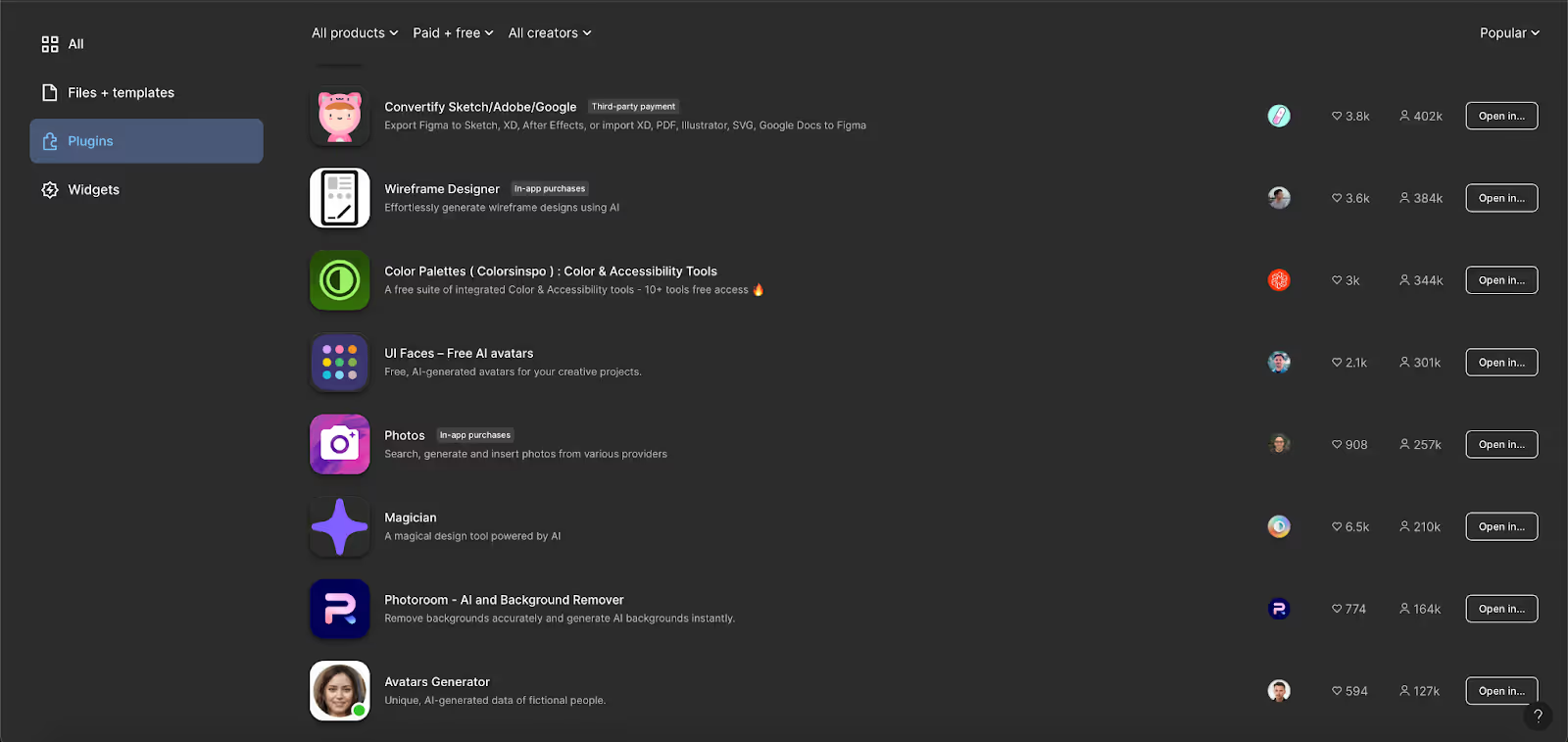
Generative design and automation
AI algorithms help generate UI/UX variations based on pre-set rules and user behaviors. Similarly, AI-powered automation in Webflow and Framer allows non-designers to build sophisticated interfaces.
How this impacts SaaS product design:
- AI adapts interfaces in real time and tailors experiences for individual users.
- AI continuously tests different design variations to select the best-performing one.
- Generative design tools use behavioral analytics to refine layouts, content, and UI structures.
We help SaaS companies implement AI-driven design strategies that maximize efficiency and ensure an exceptional user experience. Here’s one of our examples - an AI-powered HR tool, Sinta.
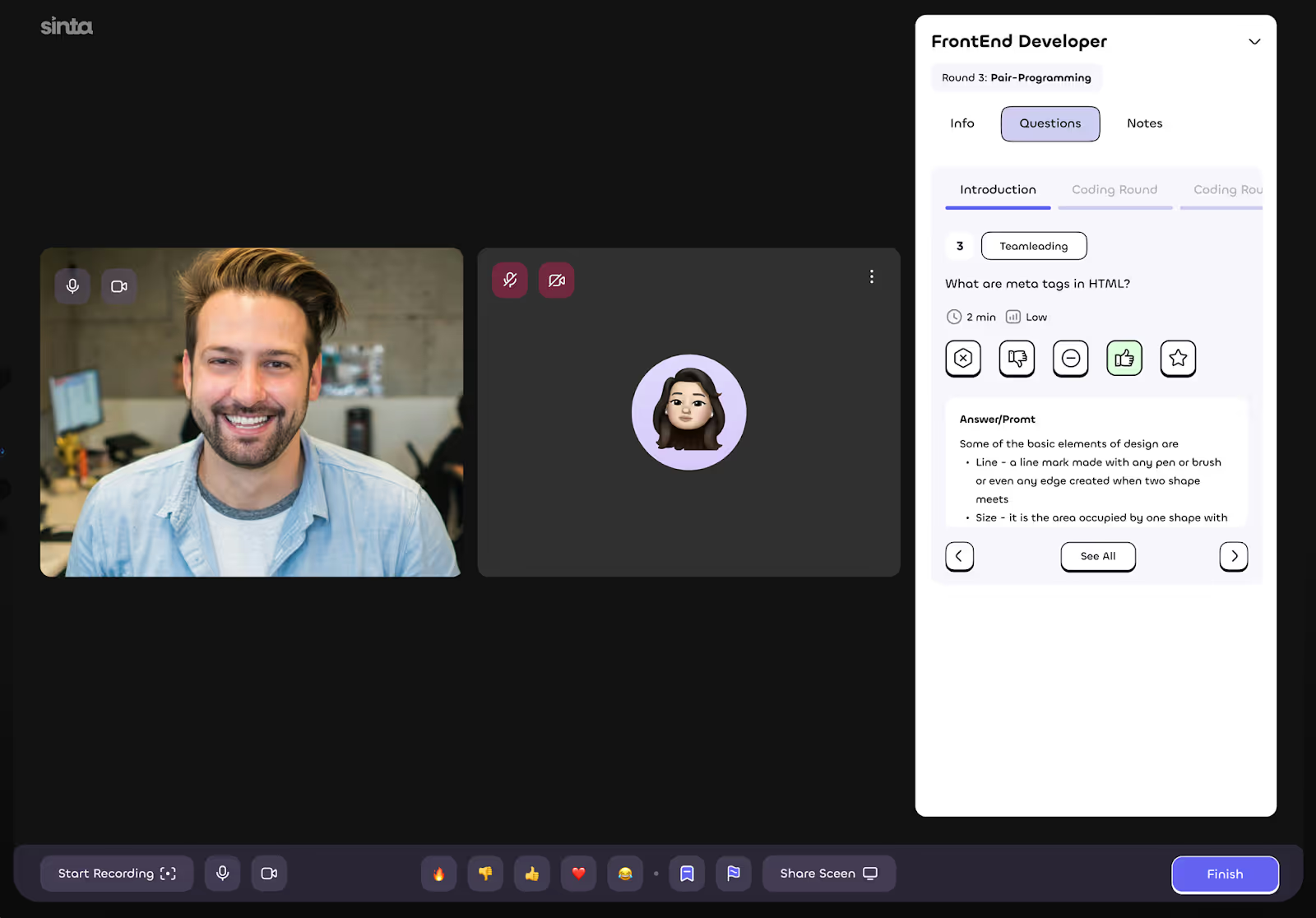
Now, let’s move further and analyze the SaaS trends in the Web3 world.
Blockchain & NFT Integration
Blockchain and NFT are no longer SaaS future trends! They are a reality that needs clear design to be adopted! Blockchain was initially associated with cryptocurrencies, but now it has expanded (from secure user authentication to NFT-based licensing). SaaS companies explore new ways to integrate decentralized security, authentication, and digital asset ownership solutions.

Digital asset ownership and authentication
Do you know what blockchain's most powerful feature is? Immutable digital ownership. It means that every transaction, file, or authentication request is permanently recorded on a decentralized ledger.
What are the benefits for SaaS companies? Blockchain-powered authentication improves security, reduces fraud, and gives users full control over their data and assets.
How does it work?
- Blockchain-based logins reduce reliance on centralized databases, making authentication more secure and resistant to cyberattacks.
- SaaS platforms can use smart contracts to automate user permissions, subscriptions, and digital rights management.
- Blockchain ensures that digital designs, UI assets, and proprietary content are securely owned and traced back to their creators.
Need some examples?
- Adobe implements blockchain-based verification through its Content Authenticity Initiative to ensure design authenticity and prevent plagiarism.
- Microsoft introduced Azure Blockchain Services, which allows enterprises to manage decentralized data authentication and smart contract executions securely.
- Salesforce launched Salesforce Web3 to integrate blockchain for customer loyalty programs and secure data tracking.
NFT-based design licensing
Non-fungible tokens (NFTs) are changing digital asset ownership, licensing, and monetization processes. When NFT appeared in the market, it exploded in the art world. But now, SaaS companies use NFT-based licensing for UI/UX assets, templates, and design systems.
How does it work?
- Designers can sell or license UI kits, icon sets, and templates as NFTs with exclusivity and proof of ownership.
- NFTs enable transparent licensing agreements, automatically handling royalty payments and usage rights.
- Companies can ensure that digital assets are authentic and haven’t been altered or duplicated.
The benefits? Instead of selling one-time design licenses, businesses can receive on-chain royalties, use dynamic pricing models, and confirm ownership of assets. Moreover, NFTs protect intellectual property.
SaaS product success depends on exceptional design. A poorly designed blockchain-based SaaS product can feel complex, untrustworthy, or inaccessible to users. That’s why human-centered design helps make your products functional, clear, simple, and engaging.
Check out our MintySwap case study to see how we designed this platform with NFT integration and made complex blockchain technology feel effortless for users.
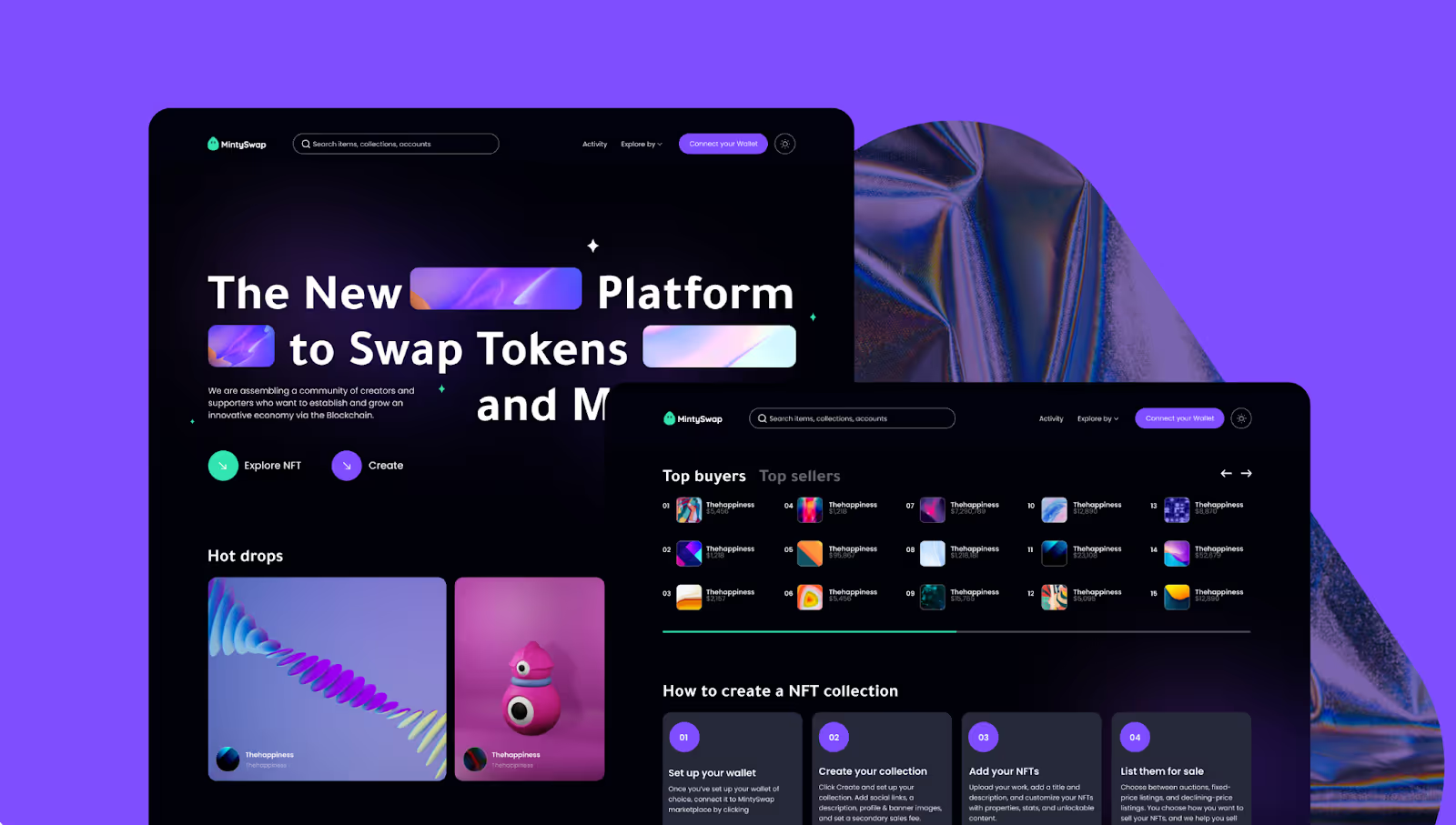
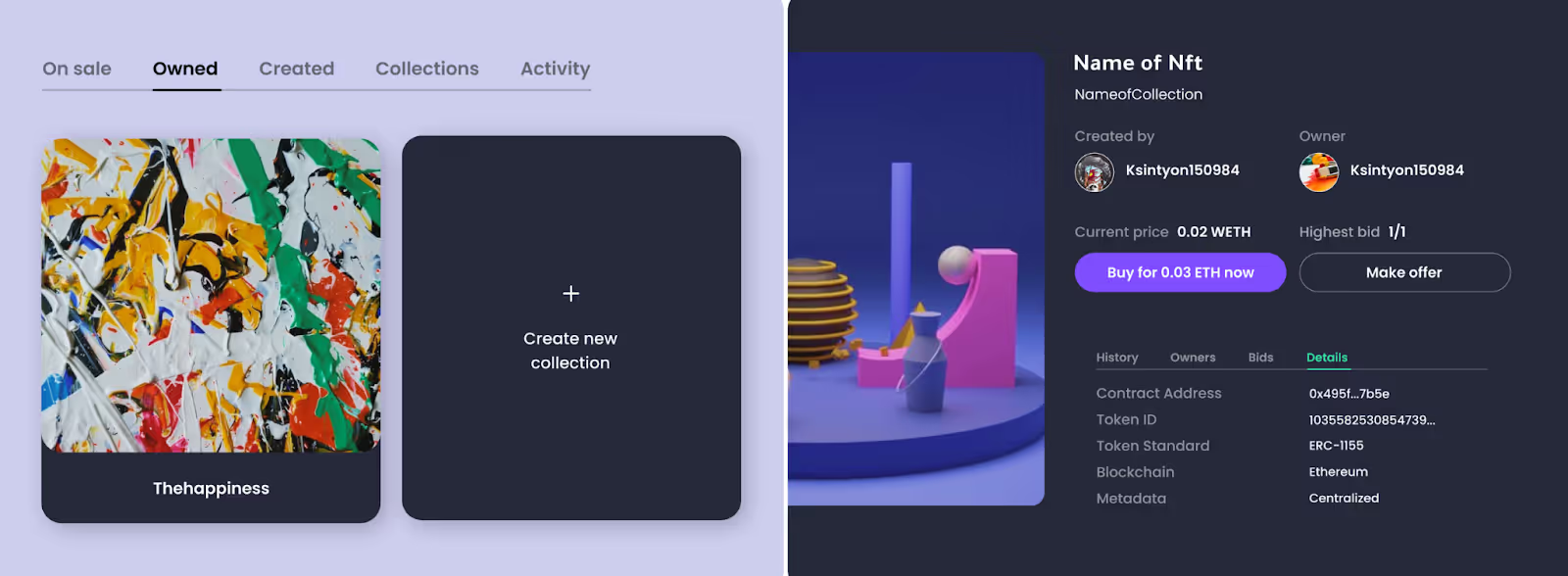
Cloud-Based Collaboration and Remote Work
The shift to remote work has changed how teams collaborate. This process is interactive and real-time that spans multiple locations and time zones. That’s why design here is central to this transformation. It allows (or not if it is low-quality) to clearly understand how to use the product no matter the time zone, nationality, culture, tech knowledge, etc.
The rise of cloud-native design software
Do you remember the days when design files were locked in desktop applications, requiring endless email chains and version tracking? Now, cloud-native design platforms like Figma, Sketch (Cloud), and Adobe XD (Cloud) changed the workflow. They enable real-time access, version control, and seamless feedback integration.
What makes cloud-native design tools essential for SaaS businesses?
- Designers, developers, and stakeholders can collaborate anywhere, eliminating location barriers. It’s about accessibility.
- Cloud-based tools ensure everyone works on the latest iteration. No more outdated files!
- SaaS teams can scale projects effortlessly without the need for local software installations.
How did it influence the design process? From our experience, Arounda teams iterate faster, receive immediate feedback, and can pivot based on real-time insights. As a result, it significantly reduces time-to-market.
Just look at how 3 designers work simultaneously on the same project in Figma from different places.

Real-time collaboration features
Cloud-based collaboration tools help teams work effectively and iterate faster without miscommunications. There is no friction between designers, developers, and stakeholders, only faster and high-quality processes.
How can you benefit?
- Cloud-based tools allow multiple team members to edit a design simultaneously, so brainstorming and prototyping are truly interactive and effective.
- Instead of lengthy emails or Slack threads, cloud-based platforms centralize feedback directly on the design file.
- Design tools now integrate with code repositories and project management tools, reducing friction in the development process.
It works! If your in-house team is overwhelmed, you don’t know how exactly to integrate a cloud-based process, or you need expert designers to accelerate your product development, Arounda’s team extension service is the perfect solution.
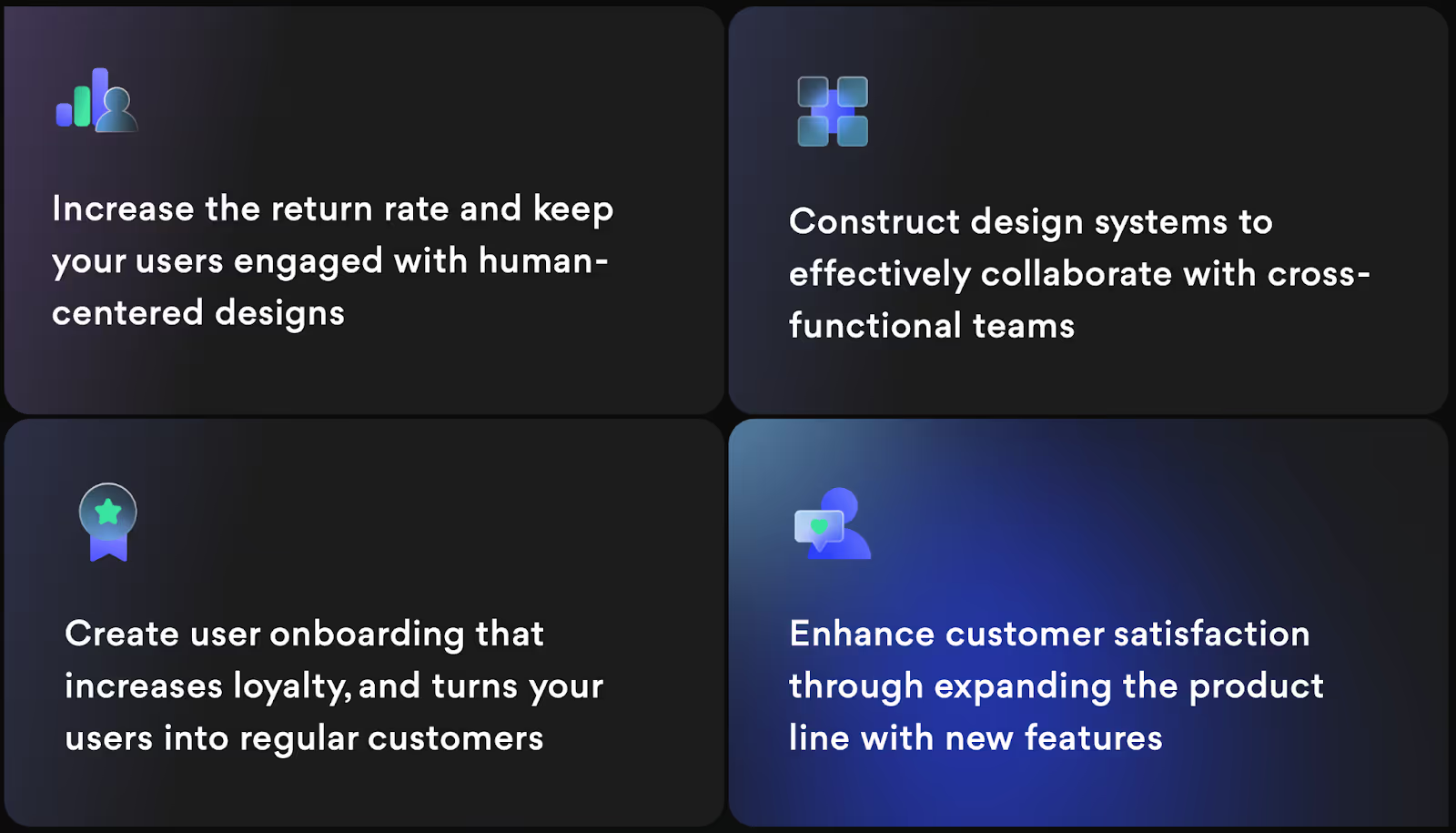
Let’s move further to the next top SaaS trends.
No-Code/Low-Code Design Platforms
No-code and low-code design platforms help non-designers, startups, and even enterprise teams to build and launch products faster without deep technical expertise. Decision-makers no longer have to choose between speed and quality. No-code/low-code tools offer a solution that allows businesses to experiment, iterate, and scale their products efficiently and uphold a high design standard.
Empowering non-designers with SaaS tools
Designing and launching a digital product required a full-stack development team that not all businesses could afford. No-code/low-code SaaS platforms give product managers, marketers, and entrepreneurs opportunities to take control of the process.
What are the benefits?
- Businesses can launch MVPs, test ideas, and scale operations with minimal development overhead.
- Teams can iterate on designs without constantly relying on engineers.
- No-code tools come with pre-built design components and best-practice frameworks.
Webflow, Framer, Bubble, and Softr allow users to design, prototype, and launch interactive websites and apps without writing a single line of code.
Early-stage companies can validate SaaS website ideas using Webflow before committing to a fully coded solution and save time and resources. Companies can adjust based on user feedback without investing heavily in traditional development cycles.
Arounda is a Webflow partner. We specialize in creating high-performance, fully customized, no-code solutions for SaaS businesses. Pixel-perfect, responsive designs. Seamless integrations with your tech stack. Optimized for scalability and growth.
Need SaaS design inspiration? Here is one of our several Webflow projects - Voxe. We provided UI/UX, website design, and Webflow development services for the Web3 social media transformation.

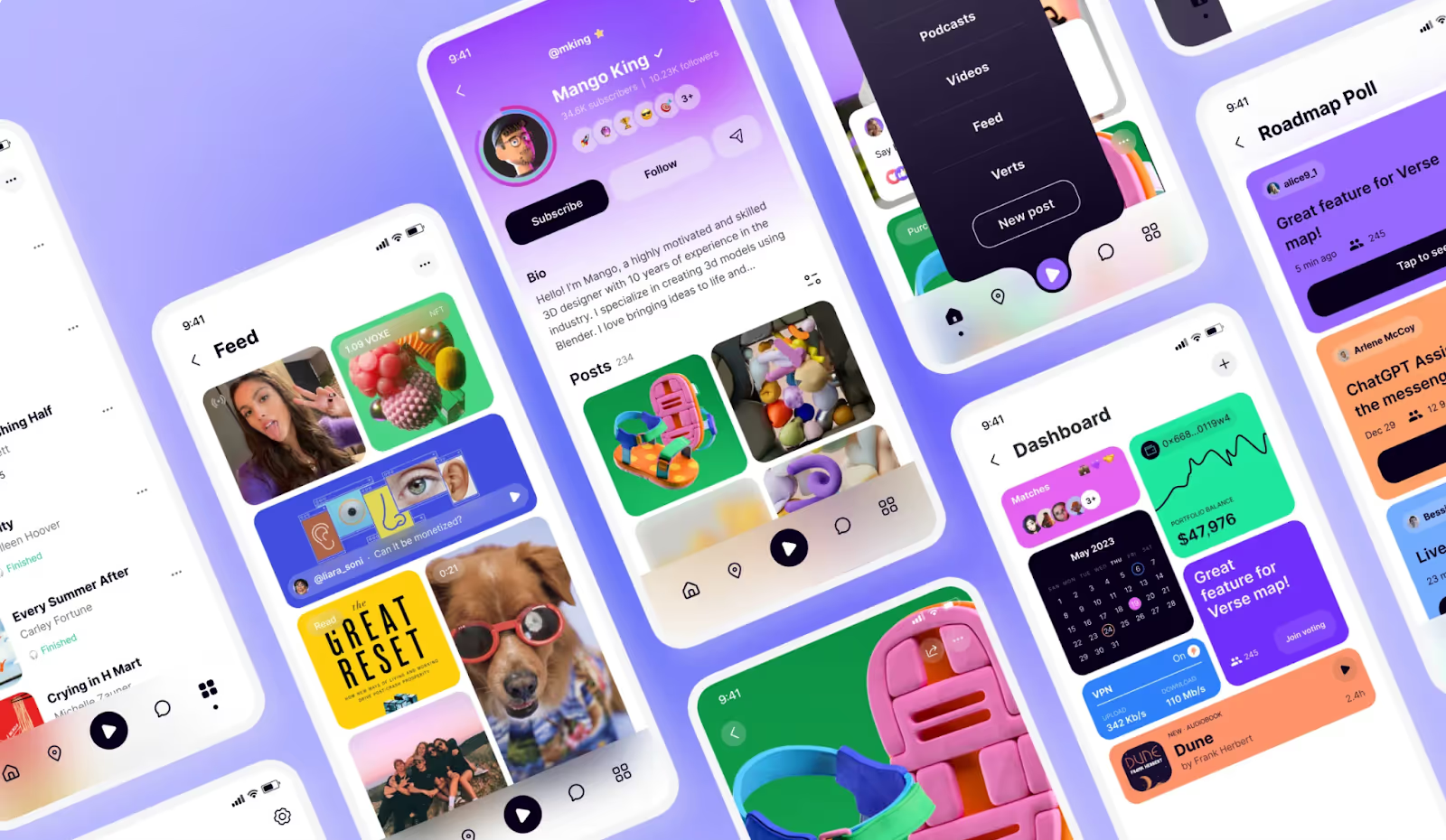
The evolution of drag-and-drop design
Drag-and-drop editors have been around for years, but today’s no-code/low-code platforms have taken this concept to an entirely new level. These tools generate dynamic, fully interactive experiences that rival custom-built solutions.
What are the benefits?
- Component-based UI libraries. Tools offer reusable UI components that maintain consistency and scalability.
- No-code platforms now connect with APIs, databases, and automation tools to build complex workflows.
- No-code tools prototype new features and streamline internal operations.
Does it mean that designers and developers can be replaced? Definitely not! They don’t need to do repetitive work and instead can focus on high-impact design strategy and innovation. Explore our Webflow development services to understand what the process looks like, what you will get, and see more examples and other nuances.

Personalization & User Experience Enhancements
It’s not a secret that users expect hyper-personalized experiences. Static SaaS interfaces are becoming outdated. Personalization is about tailored experiences, AI-driven recommendations, and adaptive interfaces that evolve based on user behavior.
Modern SaaS products use AI, behavioral analytics, and real-time data to refine UX on the fly. As a result, they get relevant interactions, higher retention, increased conversions, and improved customer satisfaction.
AI-driven UX recommendations
AI-powered UX systems analyze vast amounts of user data, engagement patterns, and preferences to deliver customized interfaces, recommendations, and workflows. Users stay longer when the platform adapts to their needs without them having to configure settings manually.
How does it work?
- AI anticipates user needs and proactively suggests actions before users even search for them.
- Platforms dynamically adjust navigation, content, and interface elements based on user behavior.
- AI continuously optimizes layouts, CTAs, and interactions to maximize engagement and conversions.
For example, Notion uses AI-driven UX to recommend templates based on a user’s previous behavior, and Spotify curates playlists based on listening habits.
Need more detailed info? We have designed several SaaS AI products, one of which is Altflow. It optimizes search engine results by generating high-quality content using a specific keyword or key phrase. Learn more about this tool, AI usage, human-centered design, and its results in our Altflow case.
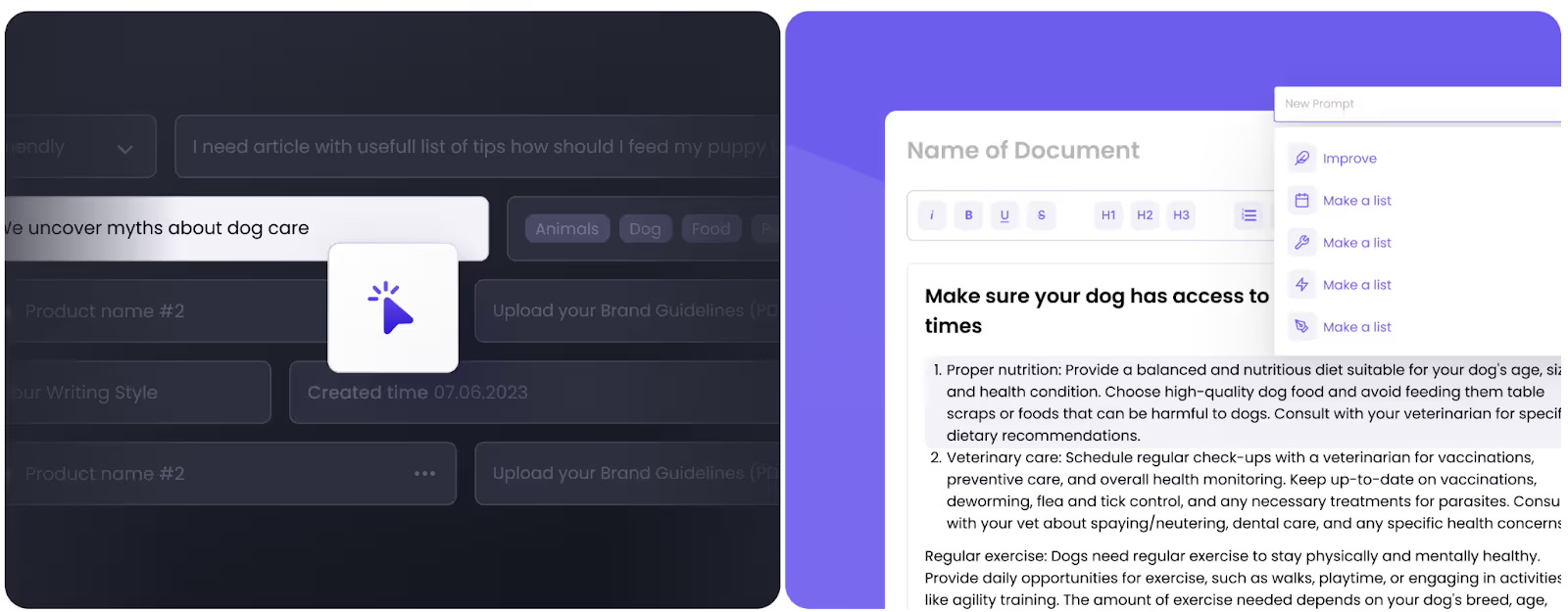

Adaptive design interfaces
Static dashboards and rigid layouts change to adaptive interfaces. This is one of the software as a service trends. Their designs adjust dynamically based on user roles, experience levels, and preferences.
How does it work?
- SaaS tools display different dashboards depending on the user role (e.g., admin, team lead, or individual contributor).
- Interfaces automatically adjust for desktop, mobile, or tablet without compromising functionality.
- Platforms simplify the UI for new users and gradually introduce advanced features.
What does it mean? Users feel more in control, no onboarding friction, and improved product stickiness.
And what about security?
Enhanced Security & Data Protection
SaaS platforms handle sensitive customer information, proprietary design assets, and financial transactions. This data is a target for cybercriminals where data breaches, cyber threats, and digital asset theft are on the rise. You must prioritize severe security measures and adherence to regulations. Protecting user data and creative assets means preventing financial and reputational damage.
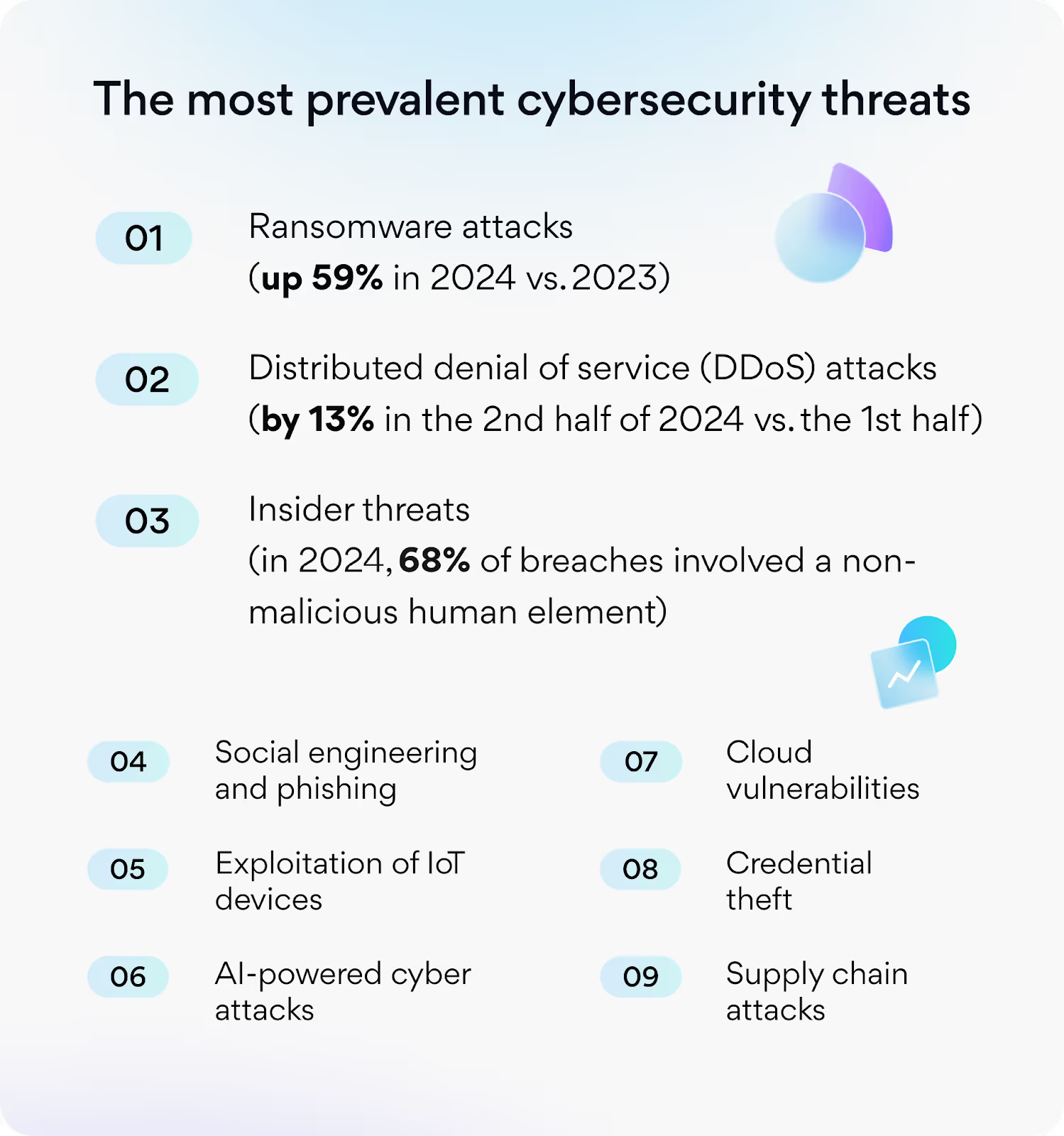
Protecting creative assets
With the rise of AI-driven content generation, unauthorized replication, and cyber threats, SaaS businesses must adopt robust security measures to safeguard their creative work from misuse or theft.
What are the key security steps to protect creative assets in SaaS?
Step 1. End-to-end encryption for design files
- Encrypted files at rest and in transit.
- Use AES-256 encryption for stored files.
- Implement TLS 1.3 encryption for file transfers.
- Ensure zero-trust architecture for internal access.
Step 2. Role-based access control and multi-factor authentication
- Implement granular permissions for designers, developers, and stakeholders.
- Enforce MFA for account logins.
- Use session timeouts and IP-based access restrictions for added security.
Step 3. Digital watermarking and fingerprinting for asset tracking
- Embed AI-powered watermarking for image and design file tracking.
- Use blockchain-backed timestamps for immutable asset ownership.
- Implement automated copyright infringement detection tools.
Step 4. Blockchain-powered ownership verification
- Store design ownership records on blockchain for tamper-proof verification.
- Use NFT-based licensing models to control asset usage and resale.
- Implement decentralized storage (IPFS) for additional security.
- Provide smart contracts to track usage rights and licensing agreements.
Step 5. Secure cloud storage with access logs and version control
- Use SOC 2-certified cloud storage providers.
- Enable real-time file versioning to track changes and restore lost data.
- Activate audit logs and alerts for suspicious access attempts.
Step 6. AI-powered threat detection and anomaly monitoring
- Deploy AI-based behavioral analytics to monitor unusual file access patterns.
- Set up automated alerts for unauthorized asset downloads or sharing.
- Implement real-time threat response systems to prevent leaks before they happen.

Compliance with data privacy regulations
Data protection laws evolve, so companies must align with industry regulations to avoid fines, legal risks, and loss of customer trust.
What you should pay attention to:
- GDPR (General Data Protection Regulation)
- CCPA/CPRA (California Consumer Privacy Act and California Privacy Rights Act)
- SOC 2 Compliance
- ISO/IEC 27001
- Australia’s Privacy Act
- PIPEDA (Personal Information Protection and Electronic Documents Act)
Compliance is important for business operations, and security is for trust, retention, and brand reputation. Build it the right way, and it becomes your greatest asset.
Need a security-first design for SaaS platforms that users love? Arounda has 8+ years of experience and 233+ successfully completed projects, and we want to share our expertise with you to design amazing SaaS products.
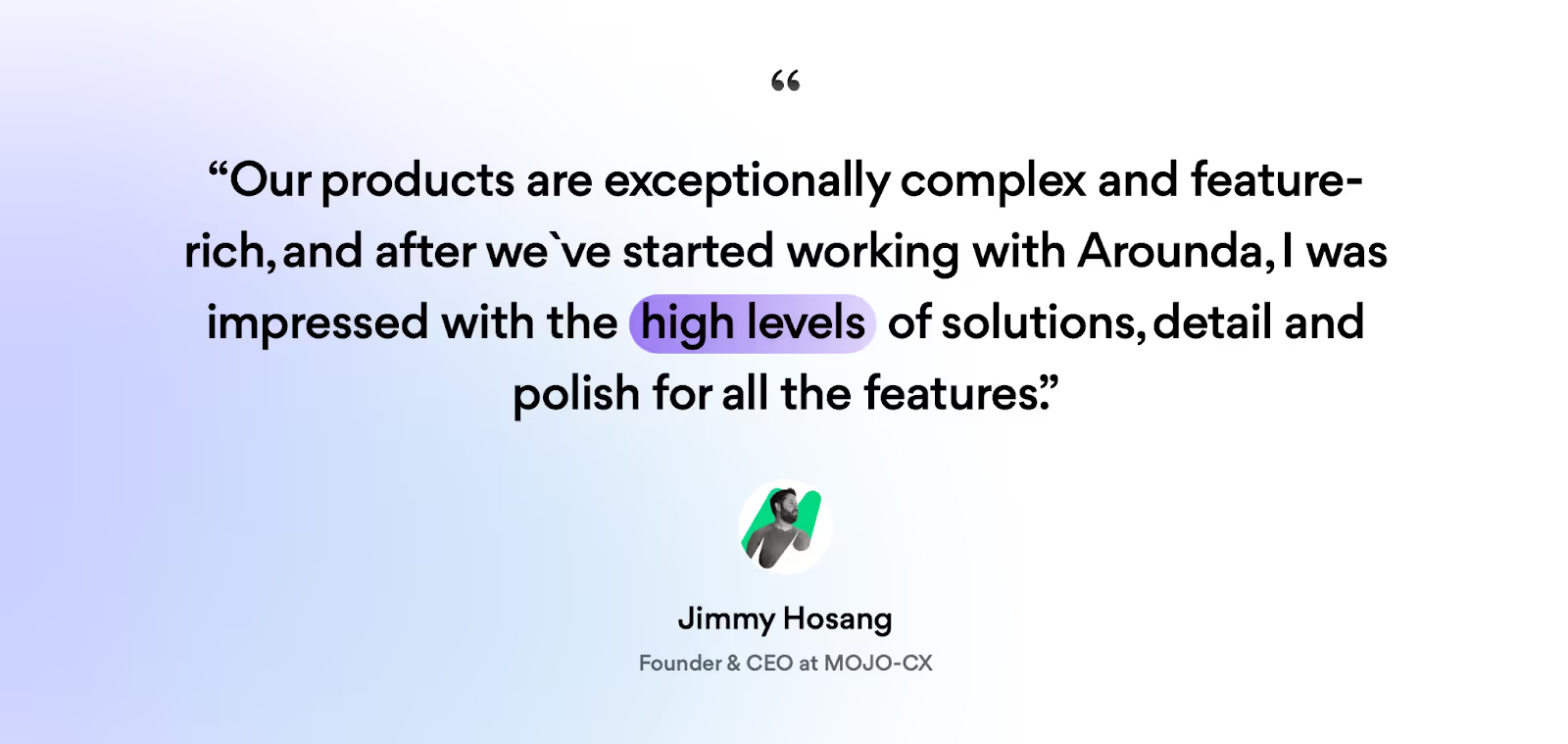
Final Thoughts
AI-powered automation, no-code platforms, blockchain integration, adaptive UX, and security-first design are the new standards for success in the SaaS market.
If you face these challenges:
- Your users expect intuitive and personalized experiences but you don’t know what solutions will be the best.
- Competition is tough, and it takes more than just great functionality to stand out.
- Security, compliance, and scalability are your worries.
Then, we recommend prioritizing design, user experience, and innovation because your product should be easy to use, secure, scalable, and future-proofed.
Arounda team has helped 233+ companies turn complex ideas into market-leading digital products. We bring the design and strategy expertise to create a new platform, redesign an existing one, or scale your SaaS business.
Need a standout, security-first, and high-performance SaaS product that users love? Contact us, and let's create a real extravaganza!














